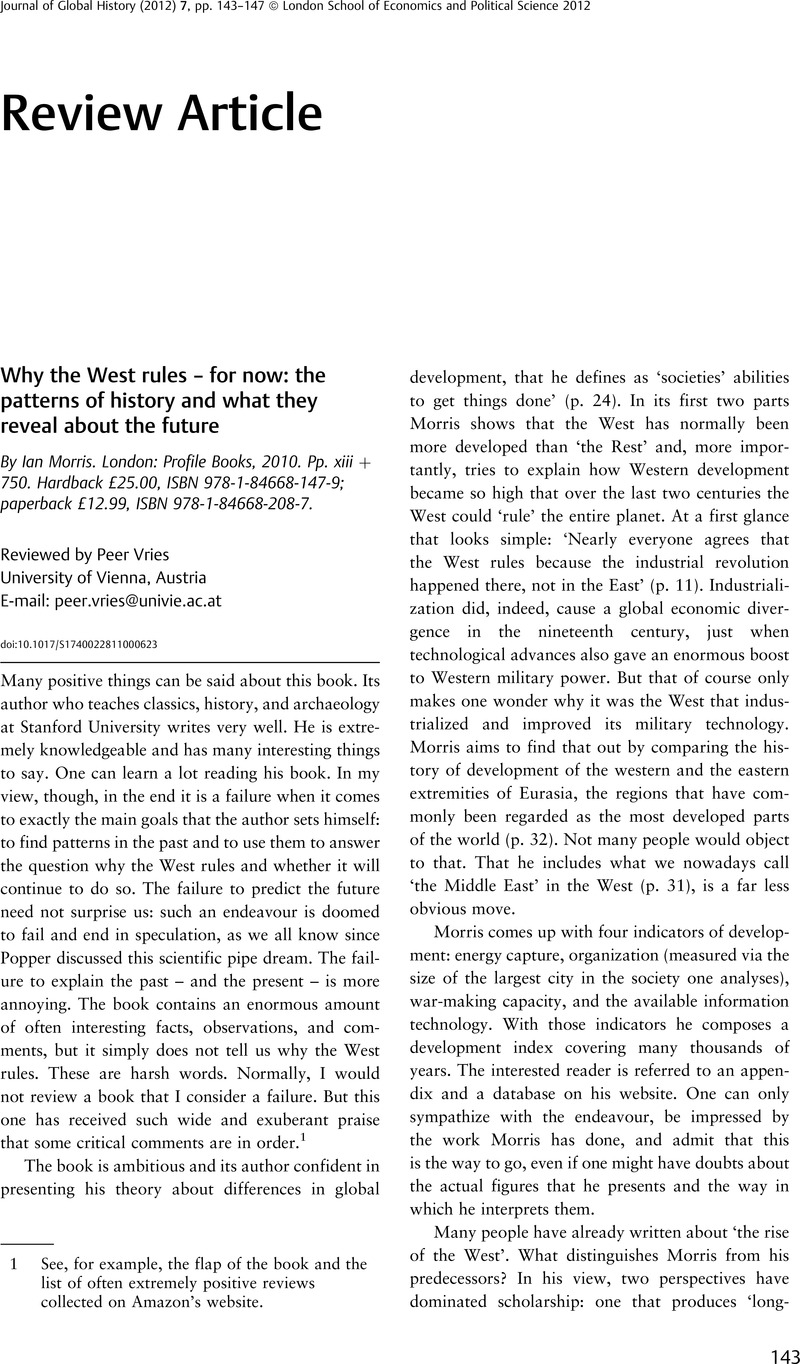Article contents
Why the West rules – for now: the patterns of history and what they reveal about the future
Published online by Cambridge University Press: 24 February 2012
Abstract

- Type
- Review Article
- Information
- Copyright
- Copyright © Cambridge University Press 2012
References
1 See, for example, the flap of the book and the list of often extremely positive reviews collected on Amazon's website.
2 For the role of institutions in causing and sustaining economic growth, see e.g. 'Acemoglu, D., Johnson, S., and Robinson, J., ‘Institutions as a fundamental cause of long-run growth’, in Aghion, P. and Durlauf, S., eds., Handbook of economic growth, vol. 1A, Amsterdam and London: Elsevier, 2005, pp.'385–472Google Scholar; Helpman, Elhanan, The mystery of economic growth, Cambridge, MA: Belknap Press of Harvard University Press, 2004Google Scholar); idem, ed., Institutions and economic performance, Cambridge, MA: Harvard University Press, 2008); Olson, Mancur, ‘Big bills left on the sidewalk: why some nations are rich and others poor’, in Olson, Mancur and Kähkönen, Satu, eds., A not-so-dismal science: a broader view of economies and societies, Oxford: Oxford University Press 2000, pp. 37–60CrossRefGoogle Scholar); Rodrik, Dani, Subramanian, Arvind, and Trebbi, Francesco, ‘Institutions rule: the primacy of institutions over geography and integration in economic development’, Journal of Economic Growth, 9, 2004, pp. 131–65CrossRefGoogle Scholar.
3 For these estimates, see Maddison, Angus, Contours of the world economy, 1–2030 AD: essays in macro-economic history, Oxford: Oxford University Press, 2007, p. 382Google Scholar.
- 1
- Cited by


